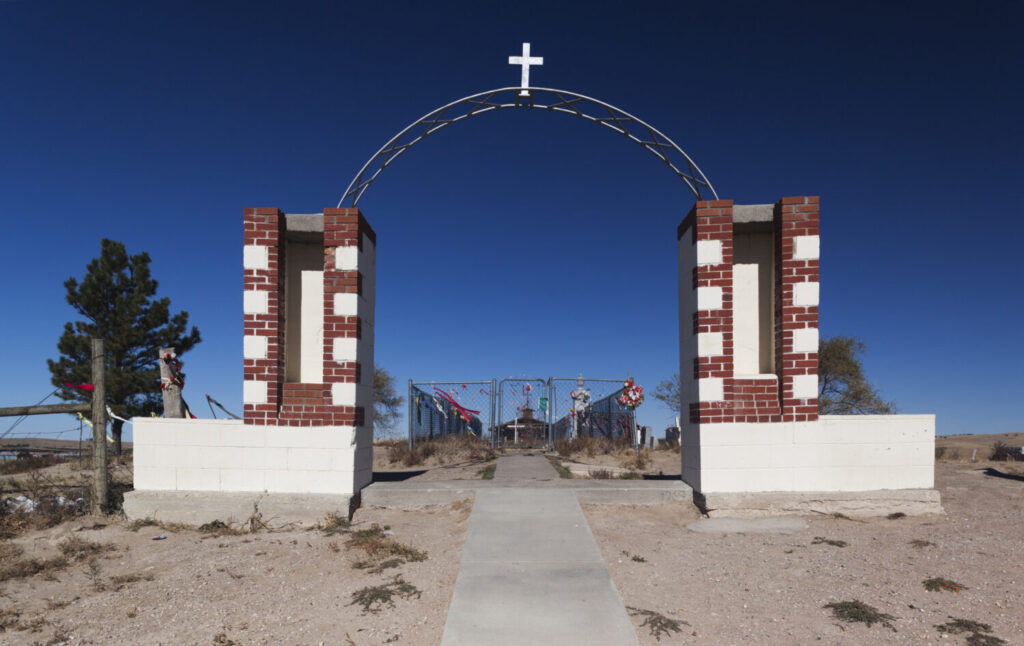A memorial at the Wounded Knee Massacre site on the Pine Ridge Reservation. (Getty Images)
The medals awarded to soldiers who participated in the 1890 Wounded Knee Massacre will be subjected to a review, the U.S. Department of Defense has announced.
The department said the review’s purpose is “to ensure no awardees were recognized for conduct inconsistent with the nation’s highest military honor.”
The move comes after years of activism by Lakota people — including descendants of massacre survivors — who want the medals rescinded.
Oliver “OJ” Semans, a member of the Rosebud Sioux Tribe, has been active in the effort with his wife, Barb, and their Four Directions nonprofit. He said it’s gratifying to see some momentum after a long struggle, including failed attempts to rescind the medals through congressional legislation.
“This issue is moving right now, and there are a lot of people involved in it,” Semans said. “We’re all trying to get to the same conclusion, and that’s justice for the descendants.”
The memorandum issued Wednesday ordering the review is from Secretary of Defense Lloyd Austin. He directed his undersecretary of defense and personnel readiness to convene a panel of five experts, including two from the Department of the Interior. The panel must send a written report to Austin no later than Oct. 15 with recommendations and rationale to retain or rescind each of the medals. Austin will then provide his recommendations to the president.
The department said “approximately 20” soldiers received a Medal of Honor for participating in the massacre. Historians have noted that the records associated with some of the medals are incomplete or unclear.
In a news release, the Defense Department attributed comments to “a senior defense official” who said “it’s never too late to do what’s right.”
“And that’s what is intended by the review that the secretary directed,” the official said, “which is to ensure that we go back and review each of these medals in a rigorous and individualized manner to understand the actions of the individual in the context of the overall engagement.”
Mass grave
The massacre occurred on Dec. 29, 1890. Lakota people were camped near Wounded Knee Creek on the Pine Ridge Reservation in southwestern South Dakota, where they were surrounded by hundreds of Army soldiers. A shot rang out while the soldiers tried to disarm the camp, and chaotic shooting ensued.
Fewer than 40 soldiers were killed (some by friendly fire, according to historians), while estimates of Lakota deaths ran from 200 to 300 or more, depending on the source. After some of the bodies froze on the ground for several days, a military-led burial party dumped them into a mass grave.
The politics and racism of the day influenced the Army’s decision to support medals for some of the soldiers, even though Maj. Gen. Nelson Miles condemned the massacre. He led the Division of the Missouri, which included the soldiers who were responsible for the incident.
“I have never heard of a more brutal, cold-blooded massacre than at Wounded Knee,” Miles wrote in an 1891 letter that’s now held in an archive at Yale.
This story first appeared in the South Dakota Searchlight, a member with the Phoenix in the nonprofit States Newsroom network.

